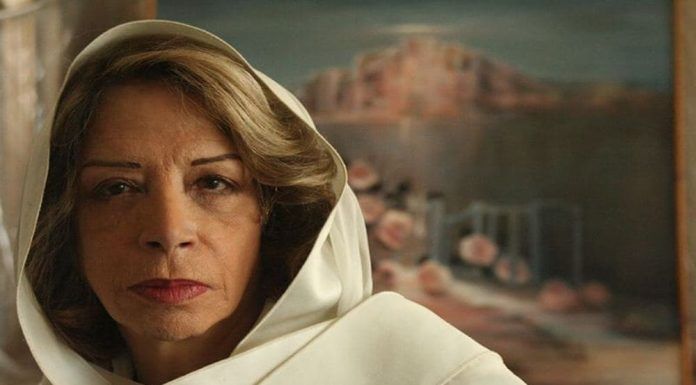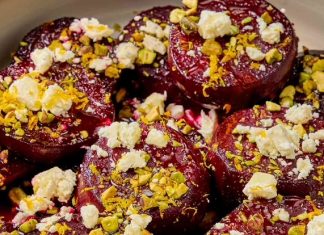By Nazanine Nouri
Iran Darroudi, the prominent Iranian painter, director, writer, art critic and university professor, died of cardiac arrest at age 85 in Tehran on October 29.
Darroudi was considered one of the most prominent artists in 20th-century Iran. In the course of a career that spanned more than 60 years, she held 64 solo exhibitions and participated in some 250 group exhibitions across Europe, Central America, Japan and her homeland Iran. Darroudi was also a writer who published several books, including her acclaimed autobiography “Distance Between Two Dots” in 1997.
Today, her work is showcased at the Tehran Museum of Contemporary Art, the Kerman Museum of Fine Arts, the Sa’dabad Palace, the Saheb Gharani-e Palace, and Belgium’s Ixelles Museum, to name but a few.
In 2015, after more than 35 years of exile in Paris, Darroudi permanently returned to her motherland to dedicate herself to the realization of her final project: the Iran Darroudi Foundation. She funded the construction of a museum bearing her name and donated some 150 works of art to be put on permanent display for the people of Iran.
“I just ask God to let me live another three years, because in my mind, I would like to hang my paintings in my museum,” she told the Arte channel in a June 2021 documentary titled “Interview with Iran Darroudi” (part of a series on Iranian art, culture and literature).
Sadly, it was a wish she would not live to fulfill.
In a statement, Empress Farah Pahlavi expressed her “profound sadness” at the news of the artist’s passing.
“Iran Darroudi was our neighbor, and I knew her from the days of my youth,” the Empress said in the statement. “One day, in an exhibition at the Talar-e-Farahang in Tehran, she shared a longstanding wish, one that was realized with the creation of the Tehran Museum of Contemporary Art.”
Empress Farah added that the artist was “pleased to have been named ‘Iran,’ a name that united her with a land that she had deep affection for, and whose art and culture she was proud of.”
Separately, the California-based Farhang Foundation also praised Iran Darroudi.
“It is with deep sorrow that we announce the passing of internationally renowned artist Iran Darroudi,” the foundation tweeted.
It is with deep sorrow that we announce the passing of internationally renowned artist Iran Darroudi. On behalf of the Board of Trustees and the entire Farhang family, we extend our condolences to Ms. Darroudi’s family, friends, & millions of fans. https://t.co/c7nhjRDAi2 pic.twitter.com/yjgbkbDlDp
— Farhang Foundation (@farhangfound) October 29, 2021
For Iran Darroudi, painting was “like a human being — it has feelings.”
“When I’m in front of this human being or painting,” she said, “I set myself free and completely give myself up to it, until it passes over me like a transparent death.”
Iran Darroudi was born in the northeastern Iranian province of Khorasan in 1936. Her paternal family were well-known merchants in Khorasan, while her maternal family were Caucasian merchants who emigrated to Iran after the Russian Revolution and settled in the city of Mashhad.
Darroudi’s father, who was fluent in German and Russian, set up a business in Hamburg, Germany where the family moved in 1937. They remained in Hamburg until the outbreak of World War II, when they were forced to return to Iran.
Iran Darroudi discovered her passion for painting at a young age. After obtaining her high school diploma, she travelled to France in 1953 to continue her studies, first at the Ecole des Beaux-Arts in Paris, and later at the Ecole du Louvre. It is during that period that Iran’s future Empress, Farah Diba, saw her work.
[aesop_image img=”https://kayhanlife.com/wp-content/uploads/2021/11/ایران-درودی-و-آندره-مالرو-نخستین-وزیز-فرهنگ-فرانسه-…jpg” panorama=”off” align=”center” lightbox=”on” captionsrc=”custom” caption=”Iran Darroudi with
André Malraux who was a French novelist, art theorist, and France’s minister of cultural affairs. KL./” captionposition=”left” revealfx=”off” overlay_revealfx=”off”]
In the Arte documentary, Darroudi also spoke of her longstanding relationship with Empress Farah.
“The Queen of Iran was our next-door neighbor,” she recalled, adding that Farah Diba and her mother had visited the Darroudi family home on a number of occasions while young Iran was studying in Paris. That’s when the future queen first came across the paintings that the artist regularly sent to her own family in Iran, who framed and hung them in the family home
“The next-door neighbor’s daughter then suddenly became queen, visited my exhibition at the Talar-e Farhang and said: ‘I really would like to see your museum one day.’”
“I said: ‘No, not my museum, but a museum of contemporary Iranian art. If I were exhibited alone and there was no possibility of comparison with other artists, there would be no point,’” Darroudi recalled telling the Queen. “‘It needs to be a place for everyone including me. If my work has any value, it will be noticed. If not, so be it.’”
Darroudi had her first solo exhibition in 1958, aged 22, in Miami, Florida at the invitation of the Miami Beach Art Center, and was presented with a key to the city by the Mayor. This was the first step in a long and successful career.
A decade later, in 1968, the ITT Corporation — which had constructed the oil pipeline between Abadan and Mahshahr — commissioned the artist to create a work on the occasion of the pipeline’s inauguration. Entitled “Iranian Petroleum,” the painting generated a great deal of media interest, and illustrations appeared in Time, Newsweek and Life Magazine. Ahmad Shamlou, one of Iran’s most revered modern poets, later named this masterpiece “Our Veins, the Earth’s Veins” [Raghay-e Zamin, Raghay-e Ma].
In parallel with her artistic career, Iran Darroudi took on a new adventure in 1966. She enrolled at New York’s RCL Institute to learn directing and television production. There, she met and married her late husband, Parviz Moghadasi, who was also studying film and television directing at the time.
After returning to Iran, the two began to collaborate on various projects at the newly established National Iranian Radio and Television. Over a period of six years, they directed and produced more than 80 documentaries on Iranian and international artists. Darroudi’s work was recognized by Iran’s Sharif University and she was subsequently invited to lecture on art history as an honorary professor.
Her recommendation to young artists was: “First, like yourself, do not listen to what people say and do not pay attention to their judgments. Do what your heart tells you to do. Do not try to become famous or make money.”
Looking back on her life in the Arte documentary, Darroudi said: “You have probably never met someone who loves life like I do and appreciates every second and is thankful for it. I believe I am one of the luckiest people on earth: I had a great profession, a fruitful life, incredible possibilities which occurred accidentally in my life, and the opportunity to meet and learn from great artists and prominent world personalities.”
Ms. Darroudi was not afraid of death. She was prepared for it — “when the time is right.”
She described it as “one of the most splendid periods in the life of any human being.”
Darroudi has now embarked on that splendid journey herself.






